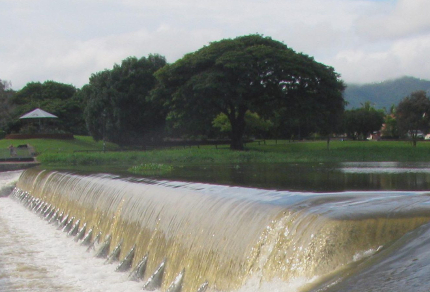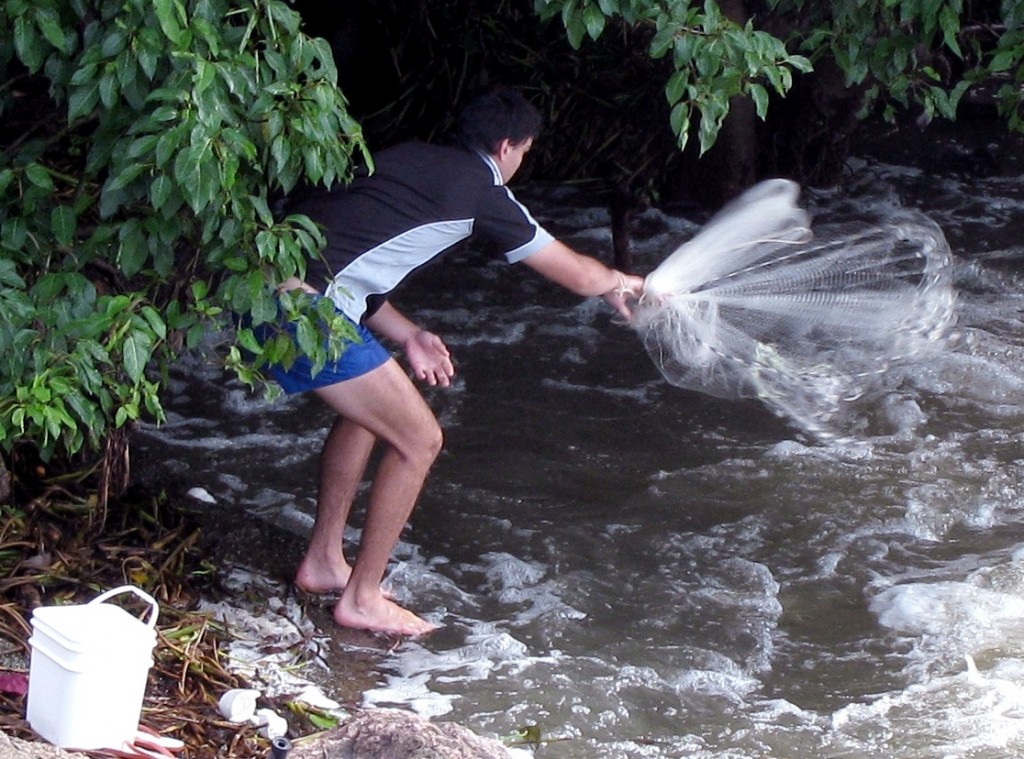
Netting Bait Below Aplins Weir (© Vilis Nams)
While the east coast of Australia awaited the arrival of the tsunami generated by yesterday’s Chilean mega-earthquake measuring 8.8 on the Richter scale, Vilis and I cycled to Aplins Weir and beyond, simply soaking up a morning of fresh air after hours of pounding rain. Whereas on national radio, boaters, swimmers, and anglers had been warned to stay out of and back from coastal waters and estuaries (not so much because the tsunami wave itself would be large – perhaps a metre or so – but because of the unusual and dangerous currents it may have created), anglers and boaters were out in full force at the weir.
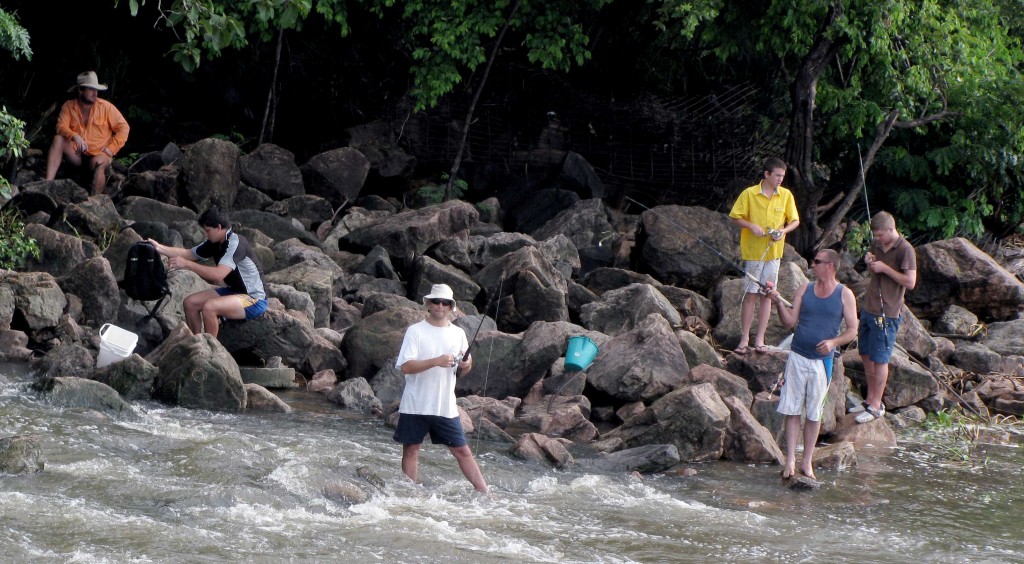
Anglers at Aplins Weir (© Vilis Nams)
One young man repeatedly tossed a throw net out into the frothing water near shore to catch bait fish. Having caught his bait, he joined four other anglers perched on boulders along the shoreline, casting their lines in parallel, glistening arcs to land their lures below the boulder barricade downstream from the weir. Still others fished from the pedestrian bridge, their white buckets beside them. Today, no one stood braced among the boulders in the river, the water too high and fast to chance it. One angler cast while standing in his battered motorboat anchored just below the boulders, and Vilis commented, “At least, if his rope breaks, he’s anchored on the right side of the weir.”
Upstream, above the weir, rowers propelled needle-like, white and yellow sculls or rowing boats across the river and then upstream. A kayaker paddled the river’s breadth again and again, his royal blue kayak a crisp, solid image against the reflections of trees in the water.
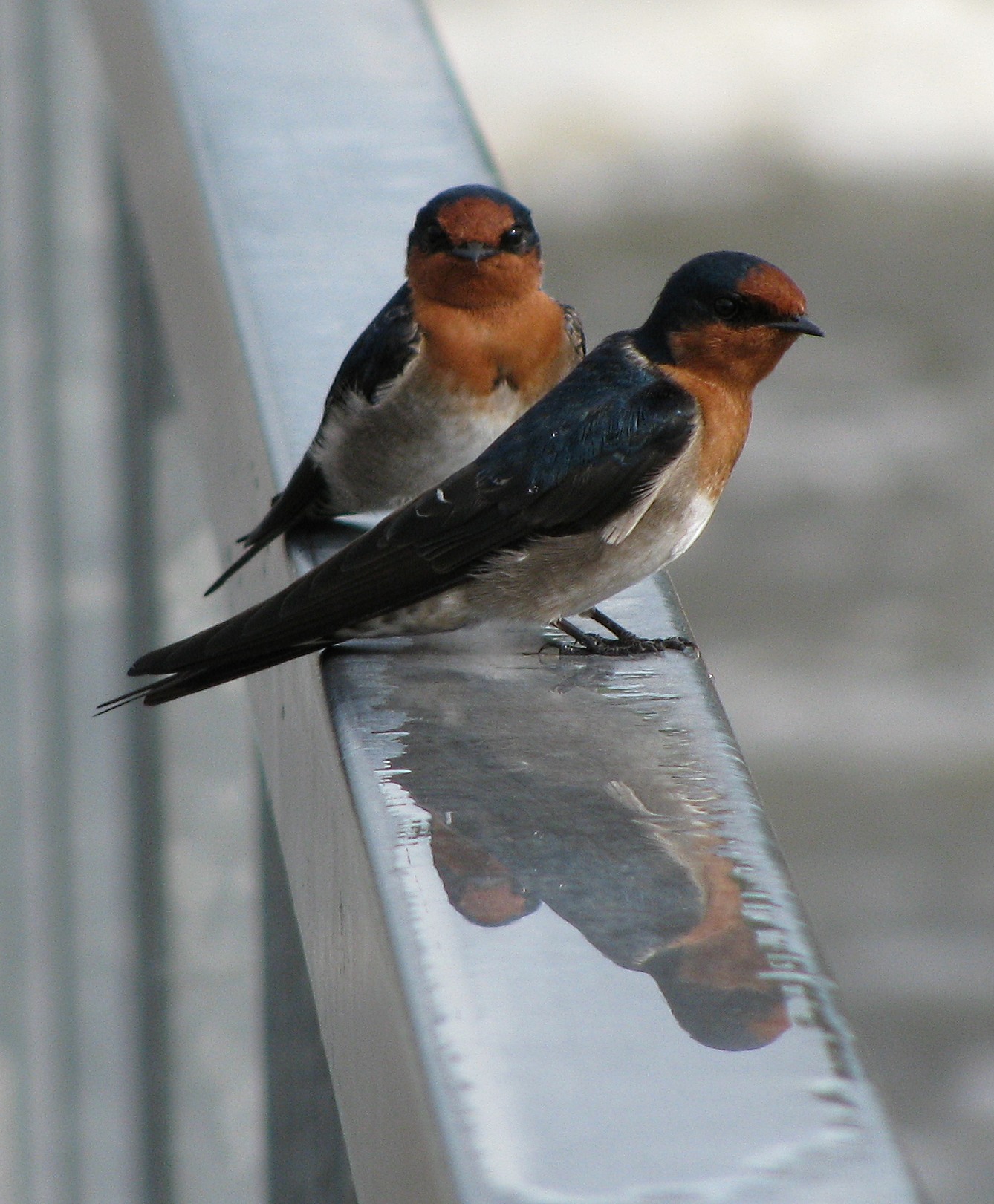
Welcome Swallows at Aplins Weir (© Vilis Nams)
Birds, too were drawn to the frothing water of the flood-ridden river. A pair of majestic wedge-tailed eagles, Australia’s largest raptors, followed the river upstream as far as the weir before banking sharply and flying south over the treetops. Welcome swallows sped over and beneath the bridge like avian darts flying erratic courses toward their insect targets. Below the bridge, a little egret stepped quickly along the water’s edge, plunging its black beak into the roiling water and snatching up a silvery fish. A Brahminy kite, beautiful scavenger and hunter of fish, reptiles, and insects, cruised over our heads, its white head and chest like a saint’s hood draped over a plumage of chestnut and black robes. I pointed it out to Vilis and told him that even knowing this bird’s name made it so much more familiar and interesting, as if that one tiny bit of information were the key to all that which comprises a Brahminy kite.
I don’t know how long we stood on the bridge, and walked its length back and forth, simply looking at the anglers, the boaters, the birds, and the water. The river poured over the weir in amber curtains edged with white frothing frills. It slid in a smooth, clear spill over the cement incline bordering the weir, like pale ale or gold-tinged hard candy poured hot from the pot. The smooth, liquid power of the spill made me want to jump onto it and ride it down river, except that I would have collided with those boulders. I looked for fish, those big, hard-fighting barra riding my wild dream, but saw none.
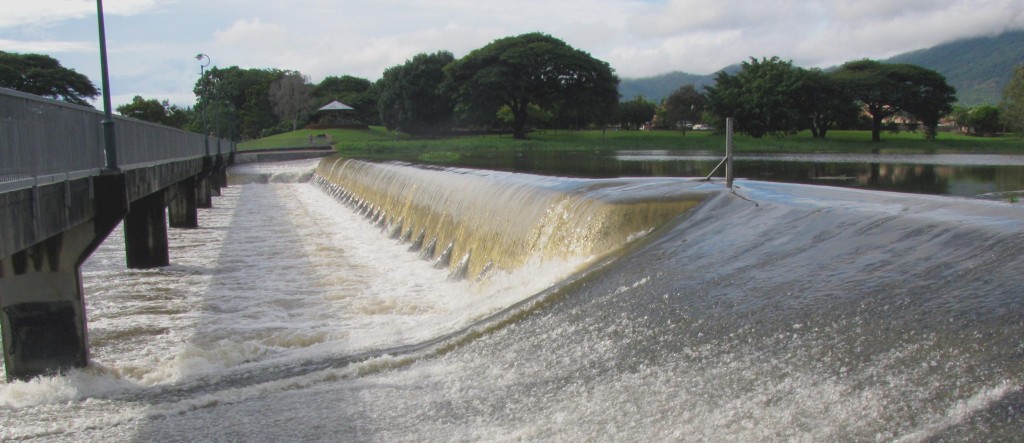
Aplins Weir (© Vilis Nams)
Loathe to return home when the morning called us onward, we cycled away into Douglas Park, where I showed Vilis the fun dips and curves, and we watched rowers carry and launch long, slim sculls.
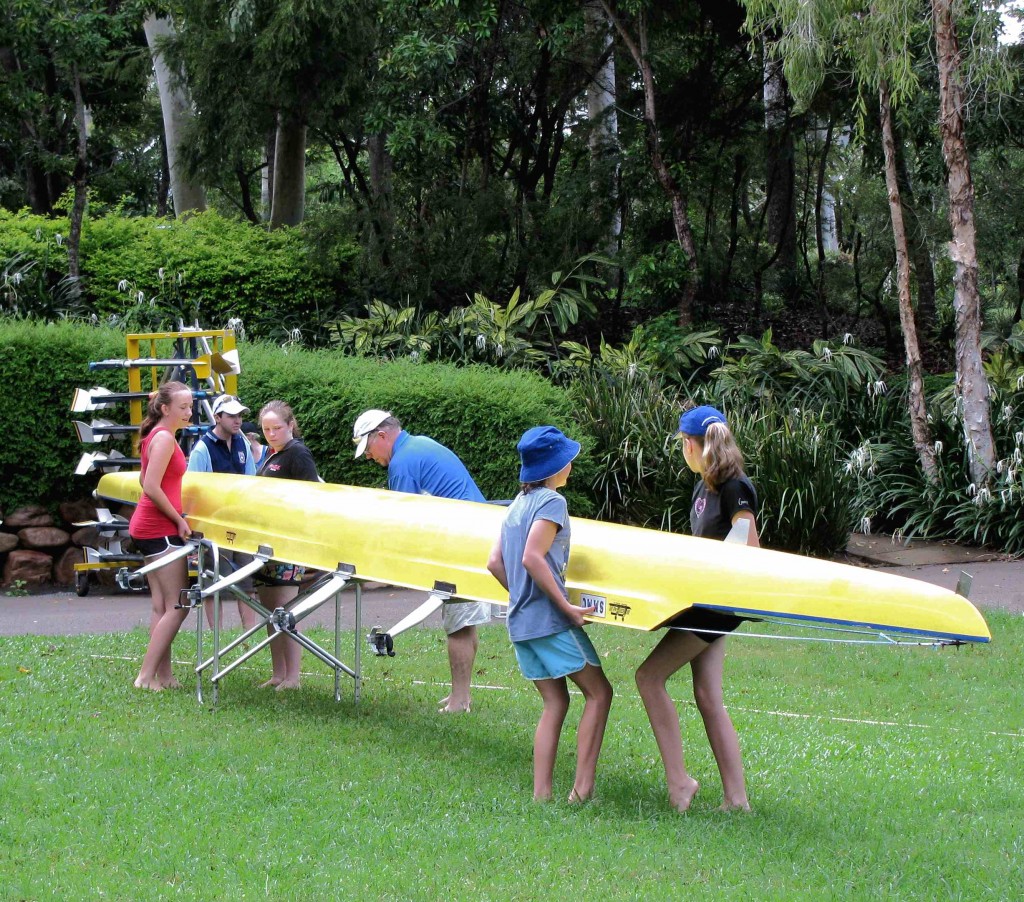
Ross River Rowers (© Vilis Nams)
At length, we returned home by way of the graceful Palmetum, which Vilis had not yet visited. On the last stretch of mango-shaded parkway before Bowen Road bridge, I spotted magpie-larks harassing a common brushtail possum, which climbed into one of the mangos and froze into stillness at our approach. Its ears, with their pink bare interiors, looked thin, and the claws of its finely-jointed toes like curved pins gripping the tree’s rough bark.
Although I’ve identified almost 100 of Australia’s native bird species during the past two months, our observations of native Australian mammals in natural habitat have been limited to 3 wallaby species, the black flying foxes, and brushtail possums. We’ve even seen more kinds of native reptiles and amphibians than we have mammals, many of Australia’s mammals being small and nocturnal in their habits. So, the second sighting of a possum was quite a thrill. I can only hope that thrill will be magnified and enriched during our week-long exploration of Tasmania. We leave in two weeks.

